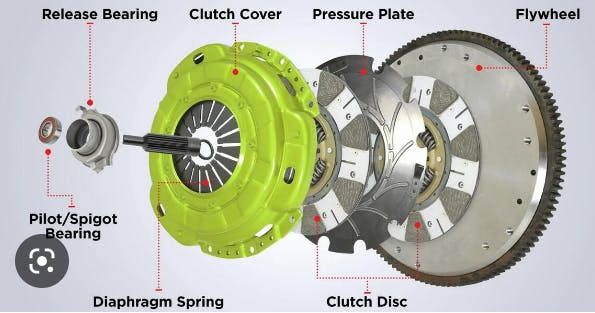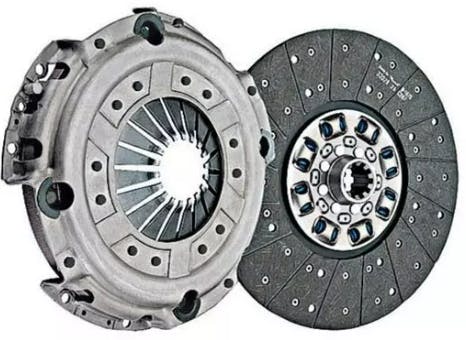The Clutch operation
A clutch is a device used in manual transmission vehicles to engage and disengage the engine from the transmission, allowing the driver to shift gears smoothly. Here is a simplified explanation of how a clutch works:

When the driver depresses the clutch pedal, it disengages the clutch, allowing the engine's power to be temporarily disconnected from the transmission. This is achieved by pushing a release bearing against the diaphragm spring in the clutch, which then releases the pressure on the clutch plates.
The clutch plates are made up of friction material on both sides and are located between the flywheel of the engine and the input shaft of the transmission.

When the clutch is engaged, the pressure plate presses the clutch plates tightly against the flywheel, allowing power from the engine to transfer to the transmission.
When the clutch is disengaged, the release bearing pushes against the diaphragm spring in the clutch, which releases the pressure on the clutch plates. This separates the clutch plates from the flywheel, preventing the transmission from receiving power from the engine. This allows the driver to shift gears without grinding the gears or stalling the engine.
In summary, a clutch works by disengaging the connection between the engine and the transmission, allowing the driver to change gears smoothly while driving.
